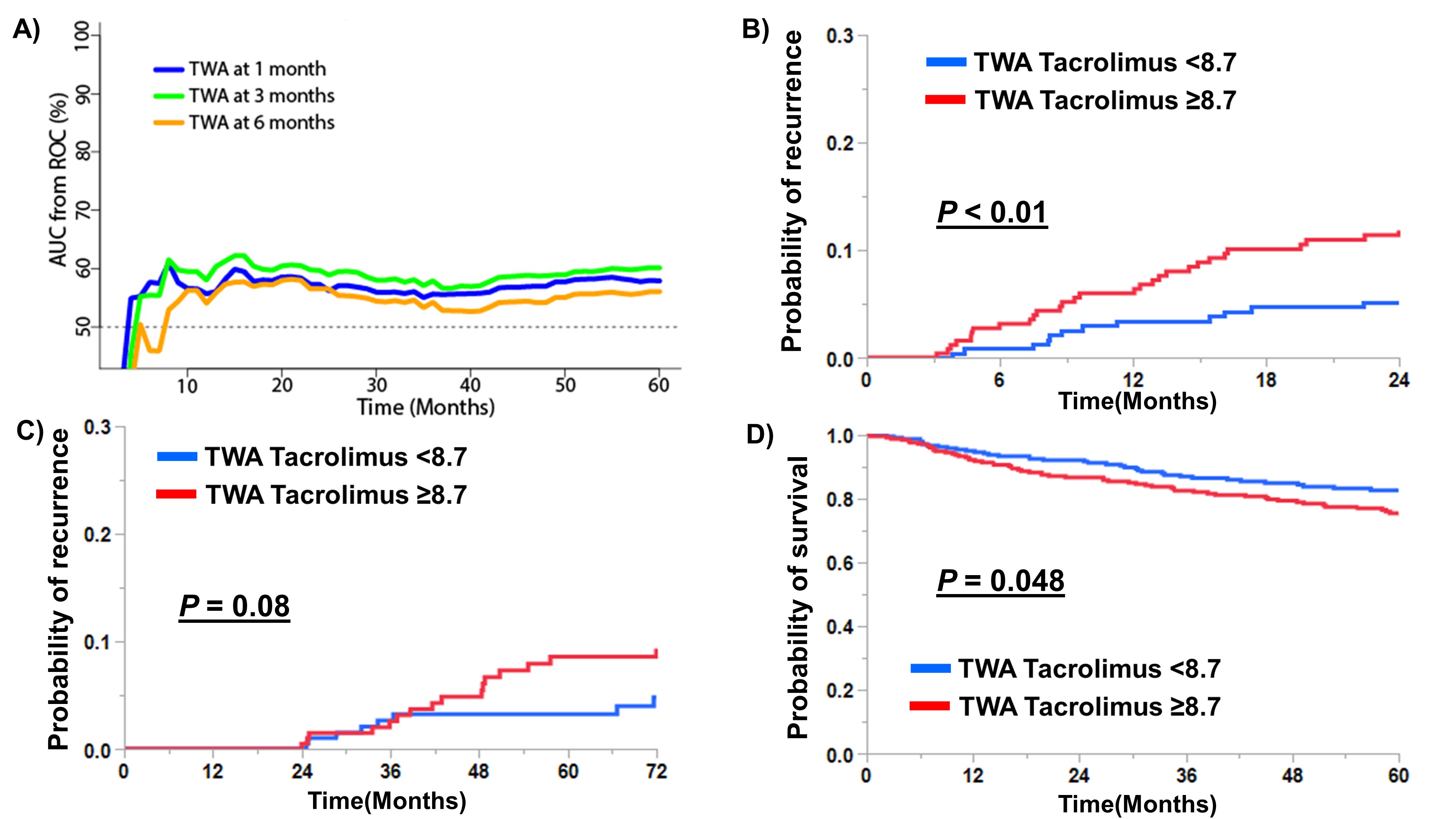The Oncological Optimal Tacrolimus Target Level after Liver Transplant for Hepatocellular Carcinoma
1The Cleveland Clinic, Cleveland, OH, 2Duke University, Durham, NC, 3Chiba University, Chiba, Japan
Meeting: 2020 American Transplant Congress
Abstract number: B-146
Keywords: Hepatocellular carcinoma, Immunosuppression
Session Information
Session Name: Poster Session B: Liver: Hepatocellular Carcinoma and Other Malignancies
Session Type: Poster Session
Date: Saturday, May 30, 2020
Session Time: 3:15pm-4:00pm
 Presentation Time: 3:30pm-4:00pm
Presentation Time: 3:30pm-4:00pm
Location: Virtual
*Purpose: The recurrence rate after liver transplant (LT) for hepatocellular carcinoma (HCC) is high as 15-20% nevertheless of complete removal of tumor and carcinogenic liver. The recurrence of HCC after LT has mainly two sources, 1) growing pre-transplant existing tumor or 2) migration of circulating tumor after LT. Inevitable immunosuppression after LT promotes both causes of tumor recurrence. Although postoperative immunosuppression level is the only modifiable factor to prevent HCC recurrence after LT, optimal immunosuppression management strategy after LT for HCC is still unknown.
*Methods: 524 patients were involved, and time-weighted average (TWA) tacrolimus level at 1-, 3-, and 6-months after LT were collected. The time-dependent competing risk ROC analysis was performed to investigate the best time point and cut-off level to predict recurrence. The hazard ratios (HRs) of tumor recurrence, according to the level of tacrolimus, were estimated using Fine-Gray model competing risk regression. The risk of immunosuppression was adjusted with history of rejection, induction therapy, and tumor/patient factors.
*Results: : Recurrence was seen in 74 patients, and 117 patients died without recurrence. The median TWA tacrolimus levels at 1-, 3-, and 6-months after LT were 9.4, 8.7, and 8.4, respectively. The time-dependent AUCs were plotted in Figure A, demonstrating 3 months TWA had the highest AUC to predict recurrence (0.63). The cut-off of 3 months TWA tacrolimus level was 8.7, according to Youden index. The graft rejection confirmed by biopsy within 3 months after LT was seen in 33 patients. The median TWA tacrolimus level was significantly higher in patients who had rejection (9.8 vs 8.6). The cumulative recurrence rate in patients with 3 months TWA tacrolimus < 8.7 was significantly low and the same trend was seen even after two years from LT (Figure B and C). The 5—year survival was also significantly better in lower tacrolimus patients (Figure D). Patients with lower tacrolimus had significantly low HRs of tumor recurrence as 0.55 (031-0.96).
*Conclusions: Lower tacrolimus level (<8.7) was strongly associated with lower risk of recurrence and better 5-year survival. External validation is needed to confirm this finding.
To cite this abstract in AMA style:
Sasaki K, McVey J, Firl D, Inaba Y, Kwon CD, Hashimoto K, Aucejo F. The Oncological Optimal Tacrolimus Target Level after Liver Transplant for Hepatocellular Carcinoma [abstract]. Am J Transplant. 2020; 20 (suppl 3). https://atcmeetingabstracts.com/abstract/the-oncological-optimal-tacrolimus-target-level-after-liver-transplant-for-hepatocellular-carcinoma/. Accessed December 30, 2025.« Back to 2020 American Transplant Congress

